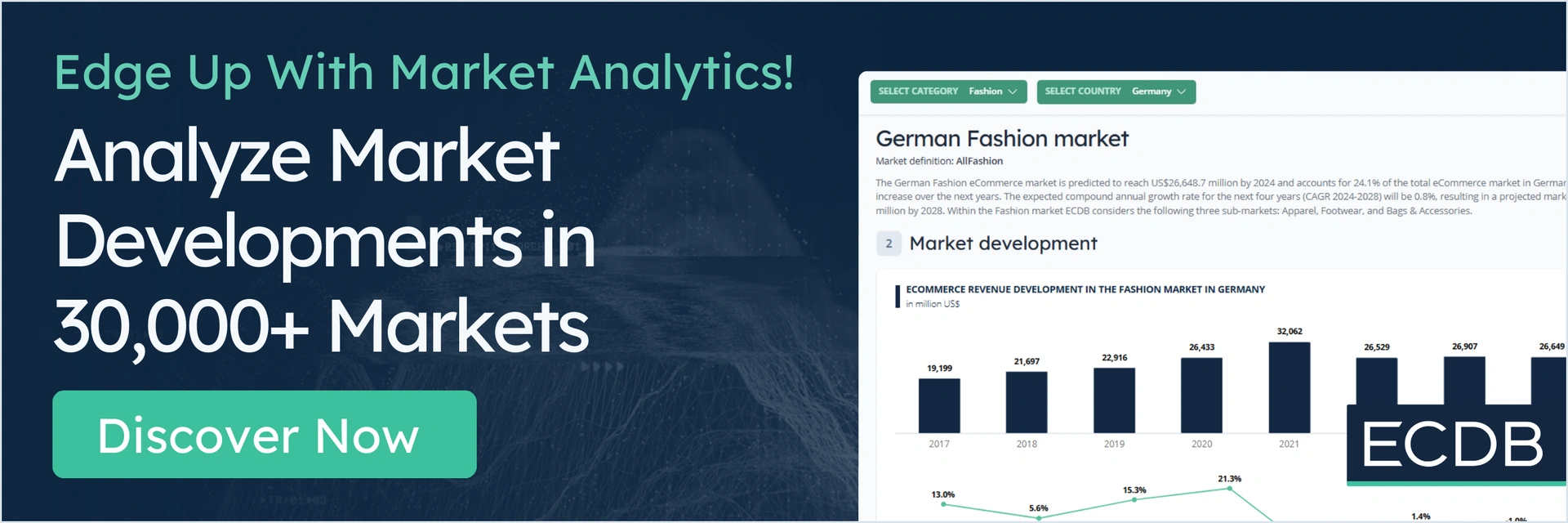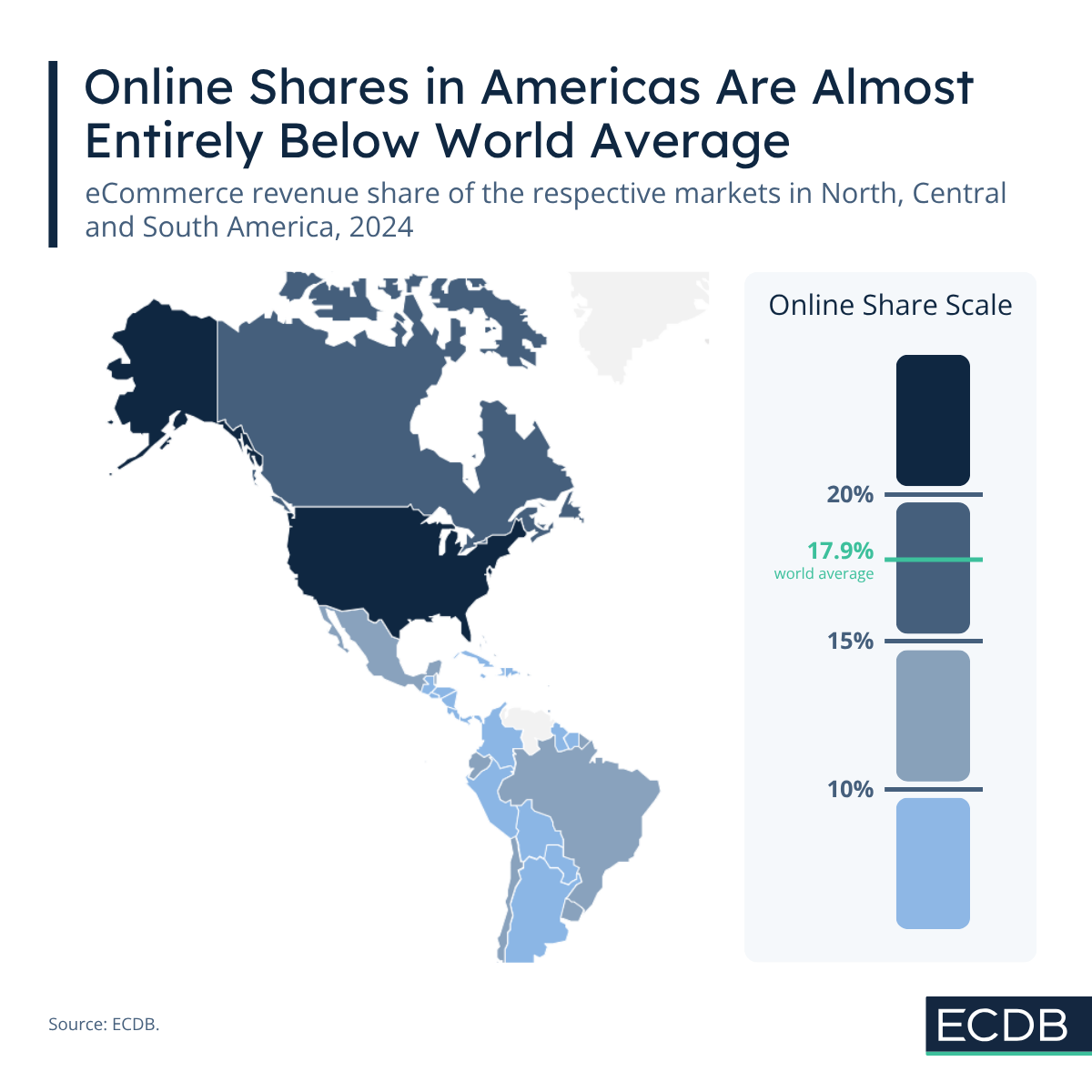Of the Americas, there are only few markets that are discussed on a regular basis. But what about the other countries that are also part of this vast continent?
In South American eCommerce markets in particular, the status quo is a low online presence and high growth potential. This position makes them attractive markets for development. However, there are variations in the degree to which this is true.
The United States and Canada Diverge From the Rest
The United States has the highest online share at 26.7%, which is significantly larger than the world average of 17.9%.
The U.S. eCommerce market is one of the most developed worldwide, as evidenced by its high online share. Its online share is second only to China’s and on par with the United Kingdom.
Canada follows with an online share of 15.8%, which is a little lower than the global average. However, it exceeds the online shares of the other markets on the continent. At the same time, both the U.S. and Canada belong to the slowest-growing eCommerce markets, which reflects their mature status.
Mexico Stands Out as a Growth Champion With Moderate Online Penetration
None of the markets with the highest online shares in Central and South America exceed 12%. They include Uruguay (11.7%), Ecuador (10.3%), Brazil (10.3%), Mexico (10.3%), Belize (10.1%) and Chile (10.0%).
The corresponding market growth rates are moderate, higher than the North American ones, but mostly lower than that of South American markets. Mexico is an exception to this rule; it is one of the world’s eCommerce growth champions.
Although Mexico has a long way to go in terms of online market penetration with an online share of 10.3%, its market revenue growth rate was 26.9% in 2024, while Brazil's was only 11.3%. Chile has an even worse rate, with a 10.0% online share and only 7.9% growth.
Mexico Has a Much Higher eCommerce Potential Than Brazil
Mexico has seen intense investment in the eCommerce sector, with a flood of eCommerce giants entering the market. Amazon, Walmart, and Coppel are the three dominant eCommerce platforms and are driving eCommerce expansion in Mexico.
Mexico’s status as a U.S. neighbor places it right at the center of tariff discussions and allows it to benefit from large players looking to join the momentum.
Brazil is similar in revenue size to Mexico with the same online share, but its growth trajectory is much flatter, with a rate of 11.3%. Underlying reasons are mostly economic in nature and have a direct impact on the speed of development in the online market.
Smaller eCommerce Markets at the Lower End of eCommerce Penetration
A large part of the continent has an online market share below 10%. Their respective growth rates tend to be higher, but the relationship is nonlinear.
The countries with the highest online shares in this category are Paraguay (9.3%), Suriname, Panama, Costa Rica, Peru (8.7%-8.8%), and Colombia (8.6%).
Smaller states like Suriname and Costa Rica have high growth rates of around 22%, but this is mainly due to their small size. For example, Suriname does not even reach US$100 million in online revenues per year.
Apart From Size: Macroeconomic Stability and Political Factors
Size is a common indicator of eCommerce's subpar relevance in the market because the region consists of diverse small markets.
Argentina, a larger country, has a low online share of 7.5% and stagnating growth, with revenues of US$18.2 billion. Argentina’s eCommerce development is hindered by restrictive tax regulations and macroeconomic instability.
Ultimately, there are the markets with very low online shares below 5.0%, like Guatemala (4.5%) and Cuba (3.7%). Although they generate solid growth, their size and country history suggest they will remain niche eCommerce markets.










